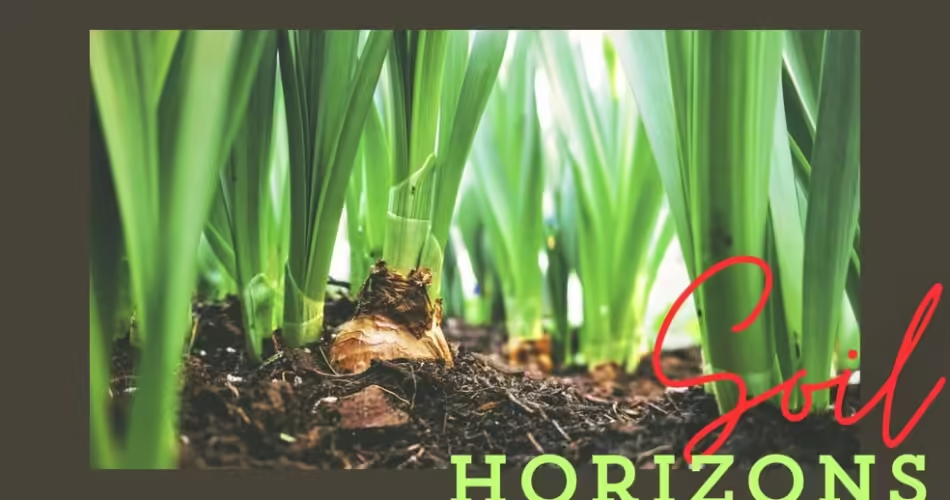This blog contains information about Soil Horizons. It starts with the explanation about what is soil. Then it explain how we harm the soil. It also mentions the properties of Soil. Then it elaborates the Types of Soil. In the end, It contains details about Soil Horizons. This blog contains Soil Properties, Types and Soil Horizons.
What is Soil?
Soil is the natural body which comprises of solid, liquid and gases that occurs on the land surface, occupies space. This is the upper layer of lithosphere that is used for agriculture purposes and on the other part of the lithosphere it is barren land or desert.
Soil is the main resource for humans and animals. Because the food of living organisms are 100% dependent on the soil. The country which as a large area that is fertile, is admire as lucky. Because they can grow large amount of food on the fertile soil and with sustainable activities, they will never face food insecurity and drought.
Soil is made up of layers and horizons. These layers and horizons are distinguished with each other in their nature and composition so these layers and horizons makes the soil best for agriculture, farming or growth of food for animals and humans.
Soil Science:
Soil science is the branch of science that deals with the study of soil as a natural resource found on the surface of Earth. This includes soil formation, classification and also mapping along with the physical, chemical, biological and fertility properties of the soil. And all of these properties are used in relation to the use of soil and management of the soil. Soil contains four components, i.e. mineral fragments, organic matter, soil air and water. Soil science deals with the study and management of all these components of the soil.
Branches of Soil Science:
1.Soil Physics:
It deals with the study of dynamics among physical soil components and also their phases as solid, liquid and gas.
2.Soil Chemistry:
This branch deals with the chemical properties, chemical composition and chemical reactions going on into the soil.
3.Soil Biology:
It is the study of microbial and faunal activity within the soil. In simple words, it accounts with the overall biological activity taking place in the soil.
4.Soil Mineralogy:
This branch of soil science is related to the fertility of the soil. Because difference in mineral content of the soil effects the fertility of the soil at great extent.
5.Soil Fertility:
It is the study of ability of the soil to sustain plant growth and optimize crop yield. It can be managed by adding organic and inorganic salts to the soil.
6.Soil Genesis and Classification:
This branch deals with the study or origin and formation of the soil, considering the factors such as parenting material, topography, biotic factors and climate.
7.Soil Survey:
It deals with collecting all the information about soil properties and overall soil quality.
8.Soil Technology:
This branch deals with the optimization and also management of the soil through Soil fertility management technologies and techniques.
These are the branches of Soil Science.
How are we Harming the soil?
We all know that we are fighting with soil pollution, air pollution and water pollution in the present time. We are short of food globally because of rise in population. Rapid unsustainable Land-use change is present in different parts of the world by converting forested land into agricultural land. We are applying Intensive farming to help us make more yields of food crops. This requires the use of fertilizers and pesticides to produce bulk amounts of food crops. By these synthetic chemicals, we are eliminating the natural ability of the soil and soon all the effected soil will be barren and will lead to drought conditions. It is happening because by using these chemicals and synthetic supplements on the soil that are harming natural ability of the soil and changing the composition of the soil by altering its layers.

Properties of Soil:
Following are some of the properties of the soil:
•Porosity
•Permeability
•Color
•Texture
•Density
•Clay
•Moisture
•Soil Horizons
•Temperature
•pH
•Water absorption etc.
Types of Soil:
Following are the three main types of Soil:
• Loamy Soil:
Loamy soil has coarse sand, tiny silt particles and clay in equal amounts. This type of soil is best for gardens as it provides good drainage and spread of the roots of the plants so it prevents drying out. It is easy to dig in and most of the plants like loamy soil.
• Clay Soil:
Clay soil is very sticky and is hard to dig in. The sediments present in the clay hold the soil tightly. It is difficult for plants roots to penetrate in the soil and it is hard for water to sink it. It is suitable for Daylilies, asters, butterfly bushes, broccoli and cabbage.
• Sandy Soil:
Sandy soil is gritty and have a light color because it has less humus (the dark colored organic matter in soil that delivers nutrients to plants. It is of tiny pieces of rocks and sand. It allows water drainage at a good level and it can drain towards the roots. Irises, rosemary, lavender etc. likes sandy soil. This blog contains Soil Types, Properties and Soil Horizons.
Soil Horizons:
Soil horizons are the layers of the soil that differ properties such as texture, structure, color and thickness. There are 5 Soil Horizons. These are described below:
• O Horizon:
It is the thin layer and upper layer of the soil that contain organic matter. This is with the high concentration of organic matter and humus layer so as it comprises of dead leaves and grasses, small rocks, twigs, surface organisms and other decomposed organic matter. This layer is in Black brown or dark brown color due to the presence of organic matter.
• A Horizon:
This layer is just beneath the O horizon. We also call this layer as humus layer. It is the layer that supports microbes to live and provide them space for the decomposition process. We also call it as topsoil as it facilitates seed germination and new roots are produced in this layer for a new plant. This layer consists of micro-organisms such as fungi, earthworms, bacteria etc.
• E Horizon:
This layer is composed of nutrients leached from O and A horizons. This layer has low clay content. E Horizon is more common in forested areas and is rich in nutrients.
• B Horizon:
It is also called the sub-surface horizon present below the topsoil and above the bedrock. It is more compact and harder than topsoil. This has less humus, soluble minerals and organic matter. It is the site of deposition of metal salts such as iron oxide. It is rich in minerals and it receive minerals from A and C horizons. This layer hold more water than topsoil.
• C Horizon:
It is also called broken bedrock. We call it broken bedrock because it contains fragmented rocks otherwise it is similar to B Horizon. This layer is also called saprolite. Geological material in this layer is cemented. This layer lies above the actual hard and rigid bedrock.
• R Horizon:
It is the last layer of soil. It is cemented and consolidated. This layer is the true bedrock layer containing rigid rocks and it is a solid layer. Different hard rocks such as granite, basalt and limestone are present in this layer. This is a hard layer and provide us with essential hard rocks that we can utilize for many commercial and construction purposes. This blog contains Soil Types, Properties and Soil Horizons.
Soil Chemistry:
It is a branch of soil science. It deals with the chemical composition, chemical properties and chemical reaction going on in the soil. As we know, soil is the heterogenous mixtures of air, water, inorganic and organic solids and microorganisms. Soil chemistry plays a very important role in maintaining quality of the soil. Because the chemical reactions within the soil effects the plant nutrition and plant growth. So, the amount of chemical reactions going on in a the soil decides the growth and nutrition of the plants. It also determines that if nutrients present in the soil can support the ecosystem functions at higher toxic levels or not. We should check the soil chemistry thoroughly before planting the crops into the soil. This blog contains Soil Types, Horizons and Properties.

To learn about more topics, click the links below:


Comments